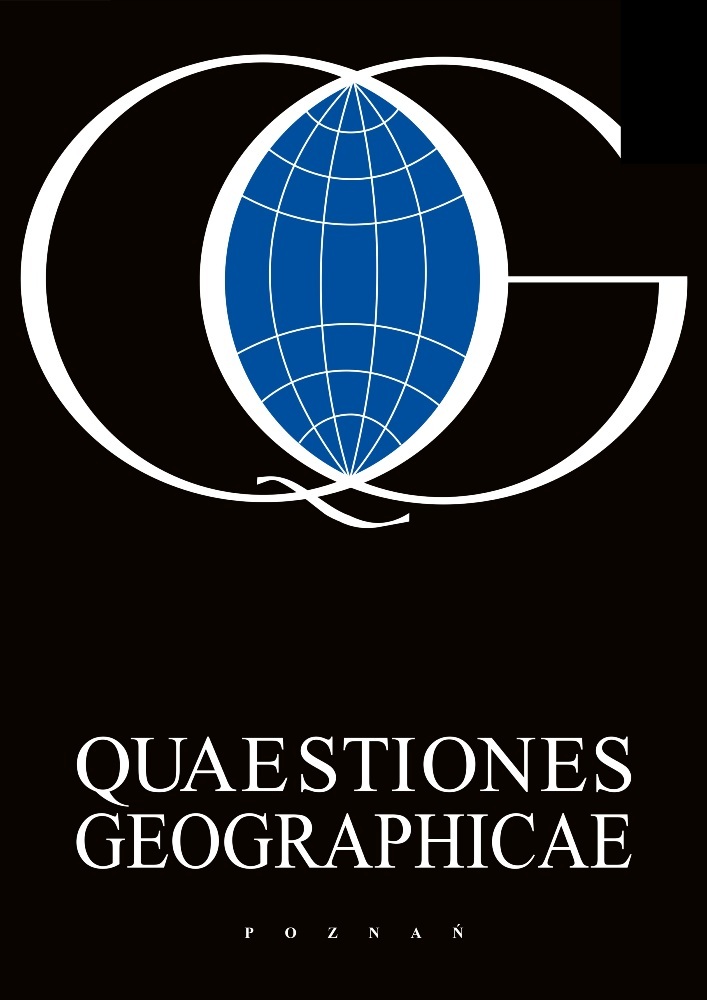Abstract
The paper summarises the progress of a frost weathering simulation experiment involving a range of rocks after more than 300 gelation cycles. Samples of granite, conglomerate, sandstone, dolomite, limestone and amphibolite were sourced in the Chochołowska Valley, Tatra Mts. The simulation project, which continues at the Low Temperature Laboratory of the Jagiellonian University, Cracow, is set to quantify the resistance of the rocks to frost weathering by measuring the number of gelation cycles after which the samples are damaged. At the end of the project, the degree of damage will be assessed using the percentage loss of the initial sample weight and a frost weathering indicator. So far, little damage has been recorded overall, with the dolomite samples losing the highest percentage of their initial weight at nearly 6%. The paper also presents results of physical tests of the rocks, including their strength, porosity and density, which provide a useful insight into the interpretation of differences in frost weathering resistance.
References
André M.F., 1996. Rock weathering rates in arctic and subarctic environments (Abisko Mts., Swedish Lappland). Z. Geomorph. N.F. 40(4): 499-517.
Andrén A., 2006. Degradation of Rock and Shotcrete Due to Ice Pressure and Frost Shattering. Luleå University of Technology 19: 24-25.
Baranowska J., Garbiak M., 1999. Badania ultradźwiękowe (Ultrasonic tests). Politechnika Szczecińska, Szczecin.
Bland W., Rolls D., 1998. Weathering: An Introduction to the Scientific Principles. Oxford. University Press, New York.
Chen T.C., Yeung M.R., Mori N., 2004. Effect of water saturation on deterioration of welded tuff due to freeze-thaw action. Cold Regions Science and Technology 38: 127-136.
Everett D.H., 1961. The thermodynamics of frost damage to porous solids. Transactions Faraday Society 57: 1541-1551.
Evin M., 1987. Lithology and Fracturing control of rock glaciers in southwestern Alp of France and Italy. In: J.R. Giardino, J.F. Shorder, J.D. Vitek (ed.), Rock Glaciers. Allen & Unwin, London, Wellington, Sydney: 83-160.
Hall K., 1992. Mechanical Weathering in the Antarctic: A Maritime Perspective. In: J.C. Dixon, A.D. Abrahams (eds), Periglacial Geomorphology. John Wiley & Sons, Chichester, New York, Brisbane, Toronto, Singapore: 103-123.
Hall K., 1999. The role of thermal stress fatigue in the breakdown of rock in cold regions. Geomorphology 31: 47-63.
Hall K., Thorn C., 2010. The historical legacy of spatial scales in freeze-thaw weathering: Misrepresentation and resulting misdirection. Geomorphology 130: 83-90.
Hall K., Thorn C.E., Matsuoka N., Prick A., 2002. Weathering in cold regions: some thoughts and perspectives. Progress in Physical Geography 26 (4): 577-603.
Kisiel I., 1982. Mechanika skał i gruntów (Rock and ground mechanics). Wydawnictwo PWN, Warszawa.
Kotarba A., 2002. Współczesne przemiany przyrody nieożywionej w Tatrzańskim Parku Narodowym (Present transformation of inanimate nature in Tatra National Park). In: W. Borowiec, A. Kotarba, A. Kownacki, Z. Krzan, Z. Mirek (eds) Przemiany środowiska przyrodniczego Tatr. Wydawnictwo Instytutu Botaniki PAN, Kraków- Zakopane: 13-19.
Lautridou J.P., Ozouf J.C., 1982. Experimental frost shattering: 15 years of research at the Centre de Géomorphologie du CNRS. Progress in Physical Geography 6(2): 215-232.
Martini A., 1967. Preliminary experimental studies on frost weathering of certain rock types from the West Sudetes. Biuletyn Peryglacjalny 16: 147-194.
Matsuoka N., 1990a. Mechanisms of rock breakdown by frost action: an experimental approach. Cold Regions Science and Technology 17(3): 253-270.
Matsuoka N., 1990b. The rate of bedrock weathering by frost action: field measurements and a predictive model. Earth Surface Processes and Landforms 15: 73-90.
Matsuoka N., 1991. A Model of the Rate of Frost Shattering: Application to Field Data from Japan, Svalbard and Antarctica. Permafrost and Periglacial Processes 2: 271-281.
Matsuoka N., 2001. Microgelivation versus Macrogelivation: Towards Bridging the Gap between Laboratory and Field Frost Weathering. Permafrost Periglac. Process. 12: 299-313.
Michalik A., 1985. Geologia - litologia i stratygrafia (Geology - lithology and stratigraphy) 1:50 000. In: K. Trafas (ed.), Atlas Tatrzański Park Narodowy. Wydawnictwo TPN, PTPNoZ, Kraków-Zakopane.
Migoń P., 2006. Geomorfologia (Geomorphology). Wydawnictwo PWN, Warszawa: 78-86.
Murton J.B., Peterson R., Ozouf J.C., 2006. Bedrock Fracture by Ice Segregation in Cold Regions. Science 314: 1127-1129.
Nowakowski A., Młynarczuk M., Ratajczak T., Gustkiewicz J., 2003. Wpływ warunków termicznych na zmianę niektórych właściwości fizycznych i strukturalnych wybranych skał (Influence of thermal conditions on change of certain physical and structural properties of selected rocks). Prace Instytutu Mechaniki Górotworu PAN Kraków, 5: 29-32.
Prick A., Guglielmin M., Strini A., 2003. Rock Weathering in Central Spitsbergen and in Northern Victoria Land (Antarctica).
Selby M.J., 1993. Hillslope materials and processes. Oxford University Press, Oxford: 137-141.
Tricart J., 1960. Prace doświadczalne w zakresie zagadnienia wietrzenia mrozowego (Experimental studies on frost weathering). In: J. Tricart (ed.), Zagadnienia geomorfologiczne. Wydawnictwo PWN, Warszawa, 201-234.
Viman S., 1963. A preliminary study of experimental frost weathering. Geografiska Annaler 45.
Walder J., Hallet B., 1985. A theoretical model of the fracture of rock during freezing. Geological Society of America Bulletin 96(3): 336-346.
Warke P.A., 2000. Micro-environmental conditions and rock weathering in hot, arid regions, Recent advances in field and laboratory studies of rock weathering. Zeitschrirft fur Geomorphologie 120: 83-95.
Whalley W.B., Warke P.A., 2005. Weathering. In: R.C. Selley (ed.). Encyclopedia of Geology 5. Elsevier, Oxford: 581-590.
License
This content is open access.
